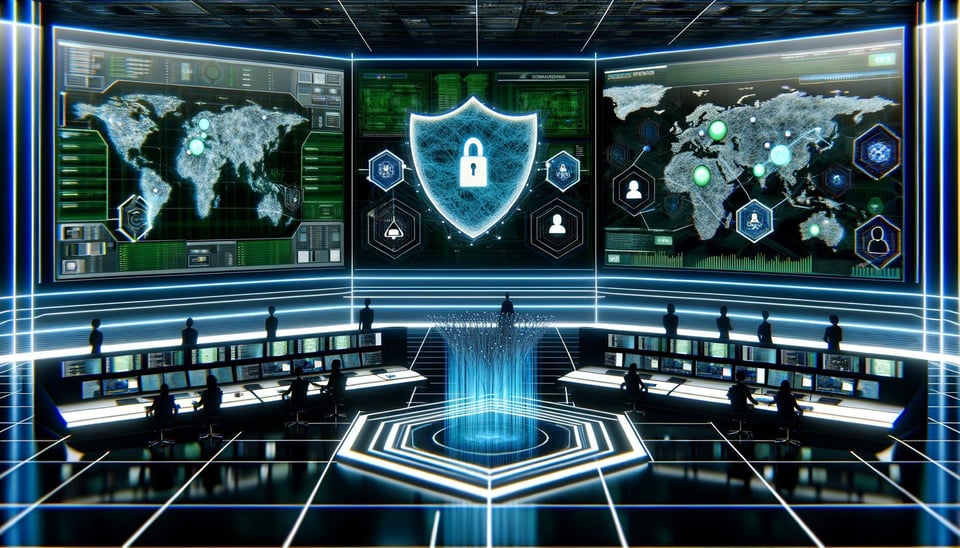Explore the cutting-edge cybersecurity solutions offered by Alqubit to protect your digital assets,...
Evolving Cybersecurity: Navigating Digital Threats

In the ever-evolving landscape of cybersecurity, the advent of new technologies and the sophistication of cyber threats go hand in hand. As we delve deeper into the digital age, the importance of innovative cybersecurity solutions like those offered by Alqubit cannot be overstated. This post will explore how cutting-edge security measures are pivotal in safeguarding digital assets against the complexities of modern cyber threats.
The Digital Frontier: Understanding Cybersecurity Challenges
The digital age has ushered in unprecedented advancements in technology, but not without its challenges. The internet is a double-edged sword, offering boundless opportunities while exposing businesses to significant risks. Cyber threats, including hackers, malware, and data breaches, have become increasingly sophisticated, making it imperative for organizations to fortify their digital defenses. One of the principal challenges lies in the constantly evolving nature of these threats, requiring businesses to remain vigilant and proactive in updating their cybersecurity strategies. Furthermore, the expansion of IT architectures, propelled by the adoption of cloud computing and IoT devices, has broadened the attack surface, necessitating advanced cybersecurity solutions to protect intricate digital ecosystems.
Zero Trust Architecture: A New Paradigm for Cybersecurity
Zero Trust Architecture represents a seismic shift in the approach to securing digital assets. This strategy abandons the traditional perimeter-based security model in favor of a 'never trust, always verify' philosophy. By treating every user, device, and application as a potential threat, Zero Trust Architecture requires rigorous authentication and authorization, significantly enhancing an organization's security posture. This approach not only diminishes the risk of internal threats but also provides a robust framework for responding to security incidents with advanced analytics and threat intelligence.
The Power of Micro-segmentation in Strengthening Security Defenses
Micro-segmentation offers an innovative method of bolstering network defenses by dividing the network into distinct, secure segments. This segmentation provides an added layer of security, making it exceedingly difficult for attackers to navigate laterally within an organization's digital infrastructure. Through micro-segmentation, businesses gain enhanced control over their data traffic, allowing for the implementation of precise access policies and significantly reducing the attack surface. Moreover, this technique aids in achieving compliance by isolating sensitive data and ensuring it is accessible only to authorized personnel, thereby mitigating the risk of breaches.
Embracing SASE for Seamless and Secure Connectivity
The Secure Access Service Edge (SASE) framework is revolutionizing network security by merging networking and security functions into a single, unified platform. SASE addresses the complexities of traditional security solutions, which often involve managing multiple products and complex integrations. By adopting SASE, organizations can enjoy simplified network architecture, secure connectivity, and enhanced user experiences. Especially in the era of cloud-based applications and remote work, SASE ensures that users can access necessary resources securely and efficiently, regardless of their location.
The Indispensable Role of VPNs in Ensuring Safe Remote Access
Despite the emergence of new technologies, Virtual Private Networks (VPNs) remain a cornerstone of secure remote access. VPNs establish a protected, encrypted connection between a user's device and the corporate network, safeguarding data privacy and integrity. This is particularly vital in a world where remote work is becoming the norm, necessitating secure access to corporate resources from any location. VPNs not only protect sensitive information from potential interception but also enable organizations to enforce access policies and control privileges, ensuring that only authorized users can access the network.
Implementing the Principle of Least Privilege to Minimize Risks
The principle of least privilege is fundamental in minimizing cybersecurity risks. By granting users only the access necessary to perform their job functions, organizations can significantly reduce the likelihood of accidental or intentional misuse of systems. Enforcing access controls based on user roles and conducting regular audits ensures that access rights remain aligned with organizational needs, thereby limiting the potential for security breaches and enhancing overall network security.
Cybersecurity Best Practices: Keys to Enhancing Your Security Posture
To effectively combat cyber threats, organizations must adhere to a set of industry best practices. Regularly updating software, implementing multi-factor authentication, conducting security training, performing security assessments, establishing incident response plans, and monitoring network traffic are all critical components of a robust cybersecurity strategy. By following these best practices, businesses can not only deter potential attacks but also position themselves to respond swiftly and effectively to any security incidents that may arise.
Staying Ahead: The Importance of Continuous Innovation in Cybersecurity
In the dynamic realm of cybersecurity, staying ahead requires continuous innovation and adaptation. As cyber threats evolve, so too must the strategies and technologies employed to combat them. Leveraging the expertise of cybersecurity leaders like Alqubit, organizations can equip themselves with the tools and knowledge necessary to navigate the complexities of the digital landscape. By embracing advanced security frameworks and practices, businesses can ensure the protection of their digital assets, maintaining resilience in the face of an ever-changing threat landscape.
In conclusion, the digital age demands a proactive and forward-thinking approach to cybersecurity. With cyber threats growing more sophisticated by the day, adopting cutting-edge solutions like Zero Trust Architecture, micro-segmentation, SASE, and VPNs is essential. By implementing these technologies and adhering to cybersecurity best practices, organizations can safeguard their digital assets and navigate the digital frontier with confidence.



